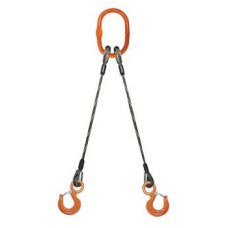 In the intricate world of material handling and rigging, synthetic web slings emerge as essential tools, each variety tailored to meet specific lifting challenges with precision and safety. Nylon and Polyester, the two predominant types, offer a spectrum of features from high strength and elasticity to chemical resistance. Each sling’s unique properties make it suited for various applications, from industrial lifting to outdoor rigging, demonstrating the critical role they play in ensuring efficient and secure material handling.
In the intricate world of material handling and rigging, synthetic web slings emerge as essential tools, each variety tailored to meet specific lifting challenges with precision and safety. Nylon and Polyester, the two predominant types, offer a spectrum of features from high strength and elasticity to chemical resistance. Each sling’s unique properties make it suited for various applications, from industrial lifting to outdoor rigging, demonstrating the critical role they play in ensuring efficient and secure material handling.
Nylon Slings
Each type of sling is designed to meet specific needs, and choosing the right one can make a huge difference in terms of safety, efficiency, and cost-effectiveness. We'll explore the four most common types: Nylon, Polyester, and Polypropylene.
1. Nylon Slings Let's start with the all-rounder of the sling world - Nylon. Nylon slings are the go-to for many riggers due to their remarkable strength and flexibility. What makes them stand out is their ability to stretch – typically around 6-8%. This stretchability is a boon, especially when dealing with shock loads, as it helps absorb the impact. However, this very feature can be a drawback in situations where you need minimal stretch. Moreover, while nylon is tough, it doesn't play well with acids. So, if you're working in an environment where acidic materials are present, nylon might not be your best bet. But for general lifting, especially where the loads have delicate surfaces, nylon slings are often the preferred choice.
2. Polyester Slings Moving on to polyester slings. These are a bit like the sensible sibling to nylon. They offer similar strength but with less stretch - about 3%. This reduced stretch means more stability and control during lifts, making them a favorite where precise load handling is key. A bonus is their resistance to certain chemicals, particularly acids. They are, however, not the best choice in the presence of strong alkalis. In industries where chemical exposure or precise lifting is a concern, polyester slings are often the front runners.
In each type of synthetic web sling has its own set of strengths and limitations. The choice depends on various factors like the nature of the load, the lifting environment, and specific performance requirements. Whether it's the versatility of nylon, or the stability of polyester, there's a sling for every lifting challenge. Remember, the key is to match the sling to the job for safe, efficient, and cost-effective lifting operations.
Related Reading